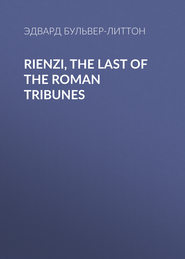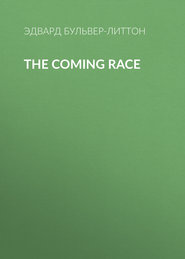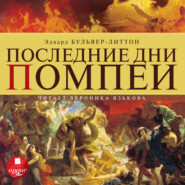По всем вопросам обращайтесь на: info@litportal.ru
(©) 2003-2025.
✖
A Strange Story — Volume 05
Настройки чтения
Размер шрифта
Высота строк
Поля
"Not return, till the old house is razed to the ground. That is my resolve. You approve? That's well. All success to you, Fenwick. I will canter back and get my portmanteau ready and the carriage out, in time for the five o'clock train."
So then he, too, had seen—what? I did not dare and I did not desire to ask him. But he, at least, was not walking in his sleep! Did we both dream, or neither?
notes
1
Beattie's "Essay on Truth," part i. c. ii. 3. The story of Simon Browne is to be found in "The Adventurer."
2
Miller's Physiology of the Senses, p. 394.
3
Abercrombie on the Intellectual Powers, p. 281. (15th edition.)
4
At the date of Faber's conversation with Allen Fenwick, the (so-called) spirit manifestations had not spread from America over Europe. But if they had, Faber's views would, no doubt, have remained the same.
5
Abercrombie on the Intellectual Powers, p. 278. (15th edition.)
This author, not more to be admired for his intelligence than his candour, and who is entitled to praise for a higher degree of original thought than that to which he modestly pretends, relates a curious anecdote illustrating "the analogy between dreaming and spectral illusion, which he received from the gentleman to which it occurred,—an eminent medical friend:" "Having sat up late one evening, under considerable anxiety for one of his children, who was ill, he fell asleep in his chair, and had a frightful dream, in which the prominent figure was an immense baboon. He awoke with the fright, got up instantly, and walked to a table which was in the middle of the room. He was then quite awake, and quite conscious of the articles around him; but close by the wall in the end of the apartment he distinctly saw the baboon making the same grimaces which he had seen in his dreams; and this spectre continued visible for about half a minute." Now, a man who saw only a baboon would be quite ready to admit that it was but an optical illusion; but if, instead of a baboon, he had seen an intimate friend, and that friend, by some coincidence of time, had died about that date, he would be a very strong-minded man if he admitted for the mystery of seeing his friend the same natural solution which he would readily admit for seeing a baboon.
6
See Muller's observations on this phenomenon, "Physiology of the Senses," Baley's translation, p. 1395.
7
Sir David Brewster's Letters on Natural Magic, p. 39.
8
Newton's explanation is as follows: "This story I tell you to let you understand, that in the observation related by Mr. Boyle, the man's fancy probably concurred with the impression made by the sun's light to produce that phantasm of the sun which he constantly saw in bright objects, and so your question about the cause of this phantasm involves another about the power of the fancy, which I must confess is too hard a knot for me to untie. To place this effect in a constant motion is hard, because the sun ought then to appear perpetually. It seems rather to consist in a disposition of the sensorium to move the imagination strongly, and to be easily moved both by the imagination and by the light as often as bright objects are looked upon."—Letter from Sir I. Newton to Locke, Lord Kinq's Life of Locke, vol. i. pp. 405-408.
Dr. Roget (Animal and Vegetable Physiology considered with reference to Natural Theology, "Bridgewater Treatise," pp. 524, 525) thus refers to this phenomenon, which he states "all of us may experience ":—
"When the impressions are very vivid" (Dr. Roget is speaking of visual impressions), "another phenomenon often takes place,—namely, their subsequent recurrence after a certain interval, during which they are not felt, and quite independently of any renewed application of the cause which had originally excited them." (I mark by italics the words which more precisely coincide with Julius Faber's explanations.) "If, for example, we look steadfastly at the sun for a second or two, and then immediately close our eyes, the image, or spectrum, of the sun remains for a long time present to the mind, as if the light were still acting on the retina. It then gradually fades and disappears; but if we continue to keep the eyes shut, the same impression will, after a certain time, recur, and again vanish: and this phenomenon will be repeated at intervals, the sensation becoming fainter at each renewal. It is probable that these reappearances of the image, after the light which produced the original impression has been withdrawn, are occasioned by spontaneous affections of the retina itself which are conveyed to the sensorium. In other cases, where the impressions are less strong, the physical changes producing these changes are perhaps confined to the sensorium."
It may be said that there is this difference between the spectrum of the sun and such a phantom as that which perplexed Allen Fenwick,—namely, that the sun has been actually beheld before its visionary appearance can be reproduced, and that Allen Fenwick only imagines he has seen the apparition which repeats itself to his fancy. "But there are grounds for the suspicion" (says Dr. Hibbert, "Philosophy of Apparitions," p. 250), "that when ideas of vision are vivified to the height of sensation, a corresponding affection of the optic nerve accompanies the illusion." Muller ("Physiology of the Senses," p. 1392, Baley's translation) states the same opinion still more strongly; and Sir David Brewster, quoted by Dr. Hibbert (p. 251) says: "In examining these mental impressions, I have found that they follow the motions of the eyeball exactly like the spectral impressions of luminous objects, and that they resemble them also in their apparent immobility when the eye is displaced by an external force. If this result (which I state with much diffidence, from having only my own experience in its favour) shall be found generally true by others, it will follow that the objects of mental contemplation may be seen as distinctly as external objects, and will occupy the same local position in the axis of vision, as if they had been formed by the agency of light." Hence the impression of an image once conveyed to the senses, no matter how, whether by actual or illusory vision, is liable to renewal, "independently of any renewed application of the cause which had originally excited it," and the image can be seen in that renewal "as distinctly as external objects," for indeed "the revival of the fantastic figure really does affect those points of the retina which had been previously impressed."
9
The summary of this distinguished lecturer's objections to phrenology is to be found in the Appendix to vol i. of "Lectures on Metaphysics," p. 404, et seq. Edition 1859.
10
The change of length of iron girders caused by variation of temperature has not unfrequently brought down the whole edifice into which they were admitted. Good engineers and architects allow for such changes produced by temperature. In the tubular bridge across the Menai Straits, a self-acting record of the daily amount of its contraction and expansion is ingeniously Contrived.
11
Bacon's "Essay on Atheism." This quotation is made with admirable felicity and force by Dr. Whewell, page 378 of Bridgewater Treatise on Astronomy and General Physics considered with reference to Natural Theology.
12
The following description of a stone at Corfu, celebrated as an antidote to the venom of the serpent's bite, was given to me by an eminent scholar and legal functionary in that island:—
DESCRIPTION of THE BLUESTONE.—This stone is of an oval shape 1 2/10 in. long, 7/10 broad, 3/10 thick, and, having been broken formerly, is now set in gold.
When a person is bitten by a poisonous snake, the bite must be opened by a cut of a lancet or razor longways, and the stone applied within twenty-four hours. The stone then attaches itself firmly on the wound, and when it has done its office falls off; the cure is then complete. The stone must then be thrown into milk, whereupon it vomits the poison it has absorbed, which remains green on the top of the milk, and the stone is then again fit for use.
This stone has been from time immemorial in the family of Ventura, of Corfu, a house of Italian origin, and is notorious, so that peasants immediately apply for its aid. Its virtue has not been impaired by the fracture. Its nature or composition is unknown.
In a case where two were stung at the same time by serpents, the stone was applied to one, who recovered; but the other, for whom it could not be used, died.
It never failed but once, and then it was applied after the twenty-four hours.
Its colour is so dark as not to be distinguished from black.
P. M. COLQUHOUN.
Corfu, 7th Nov., 1860.
Sir Emerson Tennent, in his popular and excellent work on Ceylon, gives an account of "snake stones" apparently similar to the one at Corfu, except that they are "intensely black and highly polished," and which are applied, in much the same manner, to the wounds inflicted by the cobra-capella.
QUERY.-Might it not be worth while to ascertain the chemical properties of these stones, and, if they be efficacious in the extraction of venom conveyed by a bite, might they not be as successful if applied to the bite of a mad dog as to that of a cobra-capella?
Другие электронные книги автора Эдвард Джордж Бульвер-Литтон
Другие аудиокниги автора Эдвард Джордж Бульвер-Литтон
Последние дни Помпеи




 4.67
4.67












